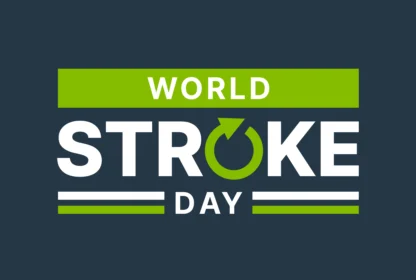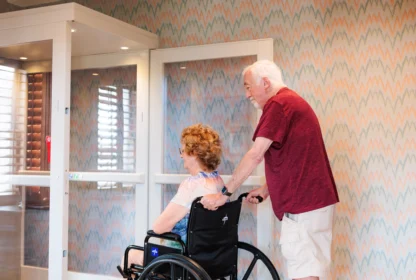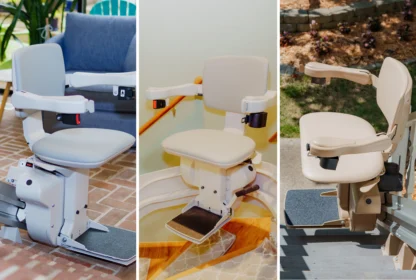Wheelchair Ramp or Platform Lift: Which Is Better?
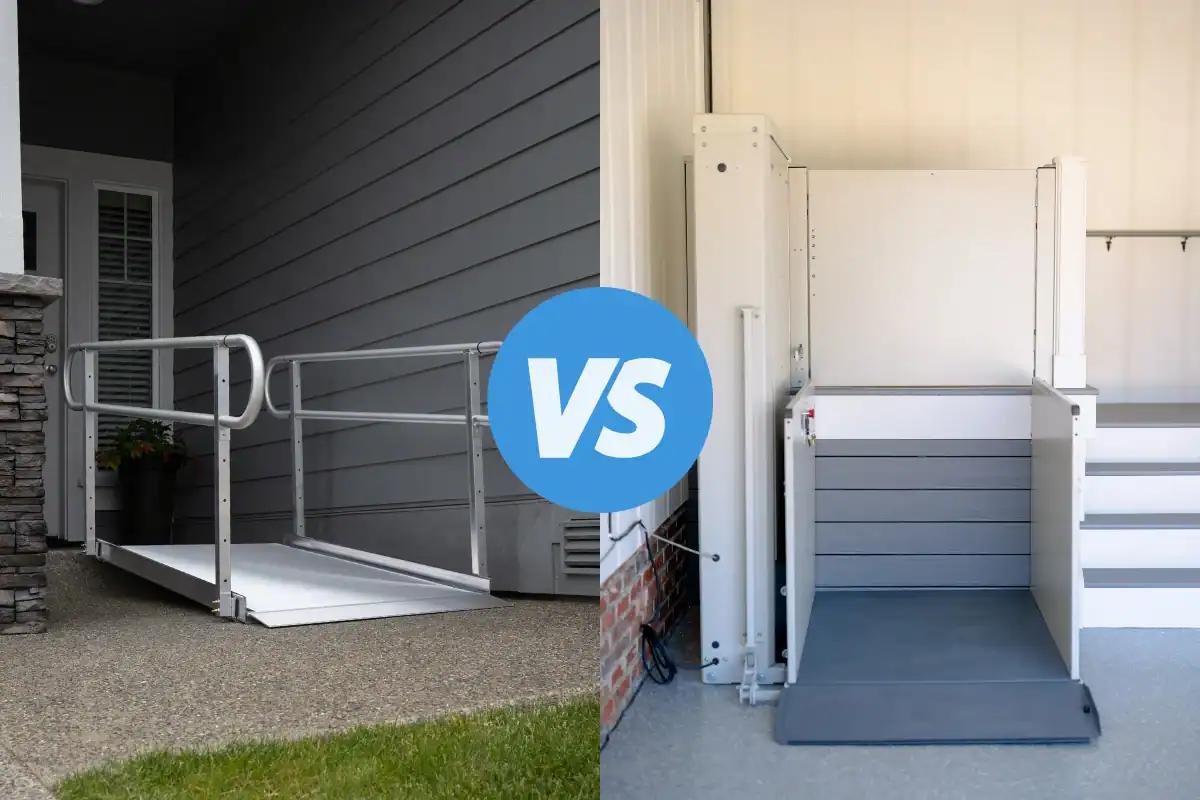
If you’re facing mobility challenges, you may be wondering about solutions designed to make your life just a bit easier.
At 101 Mobility, we offer a wide range of mobility and accessibility tools built to improve comfort, safety—and help you take back your independence.
For those seeking mobility solutions, raised porches, decks, and other access points may be of particular concern and you may find yourself wondering which products might be right for you.
Read on to weigh your options when it comes to comparing a wheelchair ramp vs. a vertical lift and get started on your mobility journey.
Deciding Between a Wheelchair Ramp and a Vertical Lift
Inclines within a home pose a particular set of challenges, especially for those who struggle with balance or use assistive devices such as wheelchairs, power chairs, or power scooters.
They can be hard to navigate, often built with large steps, raised passages, and more. These tricky inclines can mostly be found at your home’s entrance, garages, and outdoor spaces, like decks and porches.
While traversing these locations can be daunting, it doesn’t have to be. There are many solutions available that can help you overcome these obstacles and access every part of your home. Both ramps and platform lifts are viable and life-changing options available to help solve this frustrating challenge.
However, the right choice depends on your own unique needs and preferences. We’re helping you decide between an accessibility ramp or lift so you can make the best and most informed decision for you.
Wheelchair Ramps: A Time-Tested Accessibility Solution
You may already be familiar with wheelchair ramps, inclines used in place of staircases.
At 101 Mobility, we offer a wide variety of ramps, including sturdy aluminum modular ramps, threshold ramps great for smooth transitions, portable multi-fold ramps to take on the go, and simple rubber threshold ramps for non-slip access.
Aluminum modular wheelchair ramps are particularly durable and ideal when it comes to exploring more permanent solutions. They can be configured to fit many different spaces, take little-to-no maintenance, and can last for decades.
Ramps are also useful for short elevations, like small staircases with a few steps.
However, when it comes to larger staircases (like those with five steps or more), ramps may not be the right solution as they can take up a lot of space. If you have a porch that is 36 inches high and has a level concrete pad, a platform lift may be a good fit.
Wondering about specific space requirements for wheelchair ramps? Ramp length varies based on how high the ramp needs to travel.
According to ADA ramp slope guidelines, ramps should follow a 1:12 ratio. This means that you should have 12 inches of ramp for every inch of rising. For example, if a home has three steps with a total rise of 21 inches, the ramp should be at least 21 feet long. ADA also requires a platform at the top and bottom of every ramp.
Ramps are usually more cost-effective options, but this also depends on the height and layout of your staircase, porch, or deck.
Ramp cost is based on the length of the ramp and the number of platforms needed. While exact pricing varies, a ramp to travel up 30 inches often costs less than $6,000. As the ramp length and complexity increase, so does the cost — all things to keep in mind as you weigh your options.
Need help ascending a staircase inside your home? Explore the top reasons to install a stairlift or learn about why a home elevator might be the convenient choice for you.
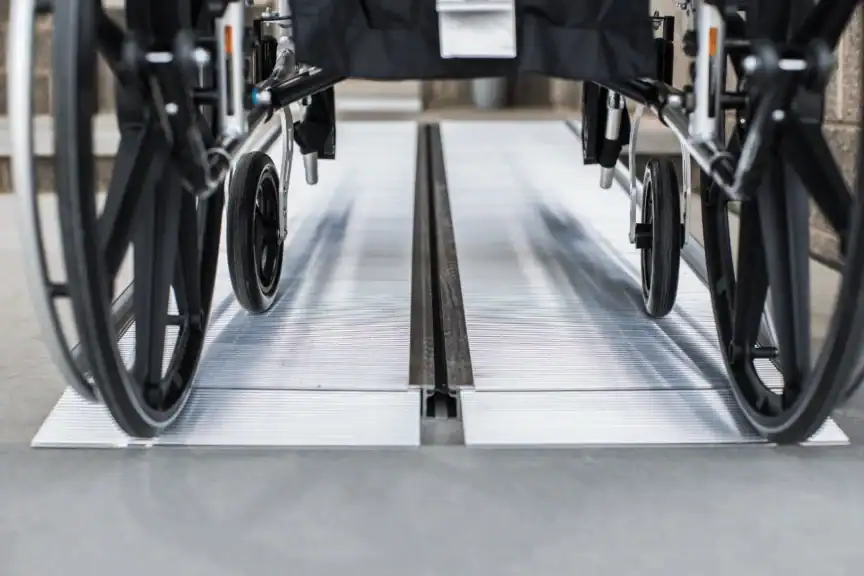
Platform Lifts: A Modern Vertical Solution
You may have seen a platform lift in a church or a restaurant.
These handy tools look similar to elevators, with a platform that raises and lowers the user. They may be fully or partially enclosed or may be completely open.
There are many vertical platform lift benefits. Despite usually appearing in commercial settings, vertical platform lifts (VPLs) are great for home use.
Vertical platform lifts for home are sometimes called “porch lifts,” because they provide access to porches and decks. They also work well for staircases in garages.
When thinking about an ADA ramp vs. a lift, it’s important to keep space and distance in mind. Platform lifts can travel up to 14 feet.
Platforms can come in a range of sizes, with 36 inches by 48 inches being standard and the largest typically 42 inches by 60 inches in size. Platform lifts are ideal for high rises (five or more steps), small spaces, or when homeowners want a discrete solution that blends in with the rest of the space.
In addition, platform lifts are especially useful for those who use wheelchairs, walkers, or rollators, as they’re able to avoid the challenges that may come with a ramp.
Platform lifts also work well for those using other mobility devices, providing an extra layer of ease and comfort. Their simple paddle-switch controls are easy for users to operate. They can also be remotely-operated with call/send switches at the top and bottom landings.
A platform lift to travel up 4 feet (48 inches) usually starts around $6,000, with the cost of installation typically bringing the total to a little over $10,000.
Cost varies depending on make, model, additional features, and whether any site prep must be done (leveling the ground, pouring concrete, etc.). If you have a porch that is 36″ high and has a level concrete pad, a platform lift may be more cost-effective than a ramp.
There are platform ramps suitable as both indoor and outdoor mobility solutions. A platform lift can be built with a cover or even an enclosed shaft, so the platform and user are protected at all times — especially ideal for cold climates.
Because of their small footprint, you can even install a platform lift in a garage. This provides ultimate shelter from the elements.
Vertical platform lifts for home can also be customized with a variety of specifications, with the option to choose from various platform sizes, weight capacities, and features like automatic doors, remote controls, and different finishes.
These are all things you’ll want to keep in mind when thinking about purchasing an accessibility ramp or lift.
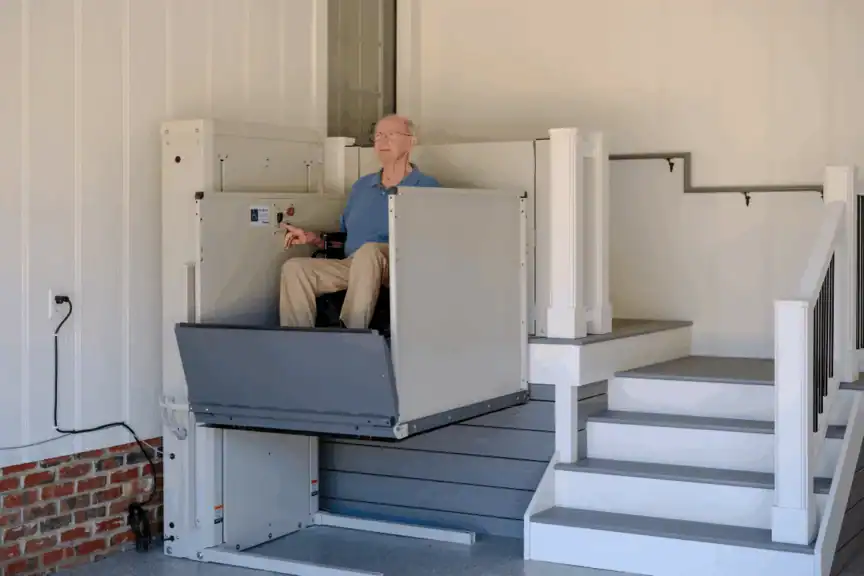
Wheelchair Ramp vs. Vertical Lift
Still weighing your options? Explore the chart below to compare a wheelchair ramp vs. a vertical lift and get insights on best uses for both:
| Installation Space | Cost & Maintenance | Usability & Independence | Safety & Weather | Speed of Use | ADA Compliance | |
| Wheelchair Ramp | Best for low rises (up to 4’) and for rises up to 1’ in a garage | More cost-effective for low rises (under 36”/ 91cm). Requires virtually zero maintenance. | Requires some effort, best for scooters and power chairs | Must be cleared of snow, leaves, etc. | May take longer to navigate depending on length | Can be made ADA-compliant |
| Vertical Platform Lift | Fits most rises (up to 14′ / 427cm high) | More cost-effective for higher rises (over 36”/ 91cm). Yearly maintenance is recommended and future repair costs may be incurred. | Easy for nearly any user to operate | Can be covered for all-weather protection | Moves slowly, but efficiently and without the need for strain | Can be made ADA-compliant |

Key Questions to Ask Before Choosing
If you need help deciding on an accessibility ramp or lift, there are a few questions you should ask yourself. Follow our quick guide below to get started.
- What is the total elevation the user needs to overcome?
- How much space is available?
- Will the user need assistance using a ramp or lift?
- Is this a long-term or short-term need?
- What is your budget for installation and maintenance?
Assess these questions, keeping a few details about a mobility lift vs. ramp in mind. It is important to note that wheelchair ramps are perfect for temporary fixes.
They’re useful for short-term recovery periods and hosting visitors with mobility needs. We even have rental options, perfect for events, graduation ceremonies, and more.
Both ramps and vertical platform lifts for homes can be used as permanent solutions. Ramps are suitable for small staircases, while platform lifts are best for high rises and areas with limited space.
Both solutions are designed to withstand the weather, but a ramp may require some maintenance depending on the climate. Both accommodate a variety of users, with VPLs being easier to use for all. Ramps are more cost-effective for lower rises. Platform lifts may be more cost-effective when the rise is 36″ or higher.
Curb appeal a concern? You may prefer a VPL that is disguised to match your home or hidden in a garage. Get outside this spring and beyond without worrying about your safety. Consider a lift or ramp and learn about additional outdoor mobility solutions.
How 101 Mobility Can Help You Decide Between a Ramp or a Platform Lift
When it comes to a wheelchair ramp vs. vertical lift, it is important to remember that you don’t have to do it alone. At 101 Mobility, we’re here to help seniors, those with mobility challenges, caregivers, and more, navigate accessibility challenges with ease.
Contact us today or schedule a free consultation. We’ll visit your home, assess your unique needs, and help you make a decision best for you.
Both VPLs and ramps can be customized perfectly to your specifications. Plus, there are many other solutions to explore when it comes to making accessibility upgrades for entering your home.
We’re locally owned, well-versed in a large range of mobility products, and we’re here to provide white-glove service every step of the way. We also provide ongoing support even long after your installation is over, so you never have to worry about a thing.
Create a More Accessible Space
Never worry about navigating a tricky incline within your home again. Choose a wheelchair ramp or vertical platform lift right for you and make it easier to access all the spaces in your home, moving freely and taking back your independence.
Looking for additional solutions? Explore our full range of mobility products designed to help you live your life fully.
We’re ready when you are. Contact us for help with an accessibility ramp or lift and we’ll take your mobility to the next level, together.

